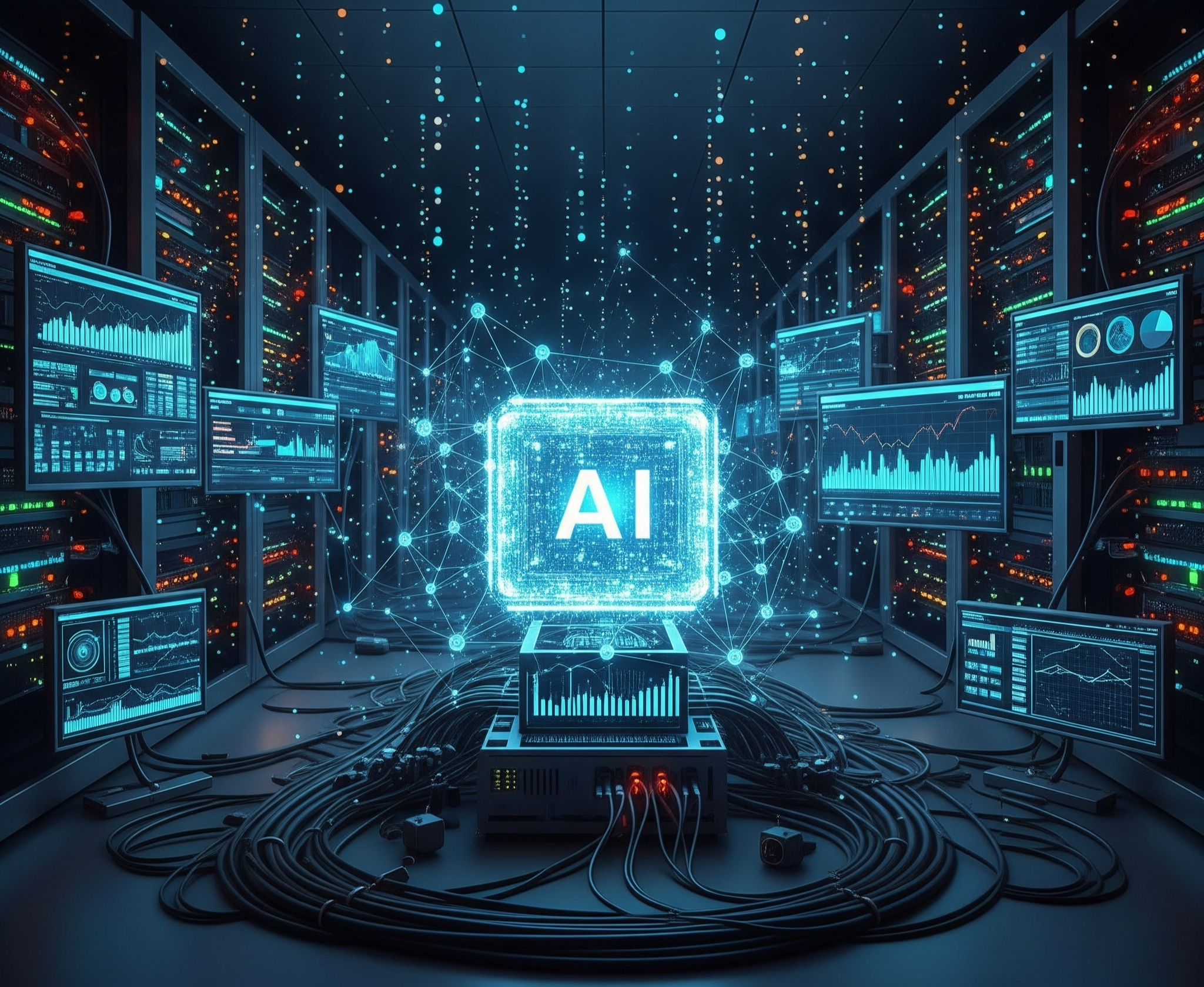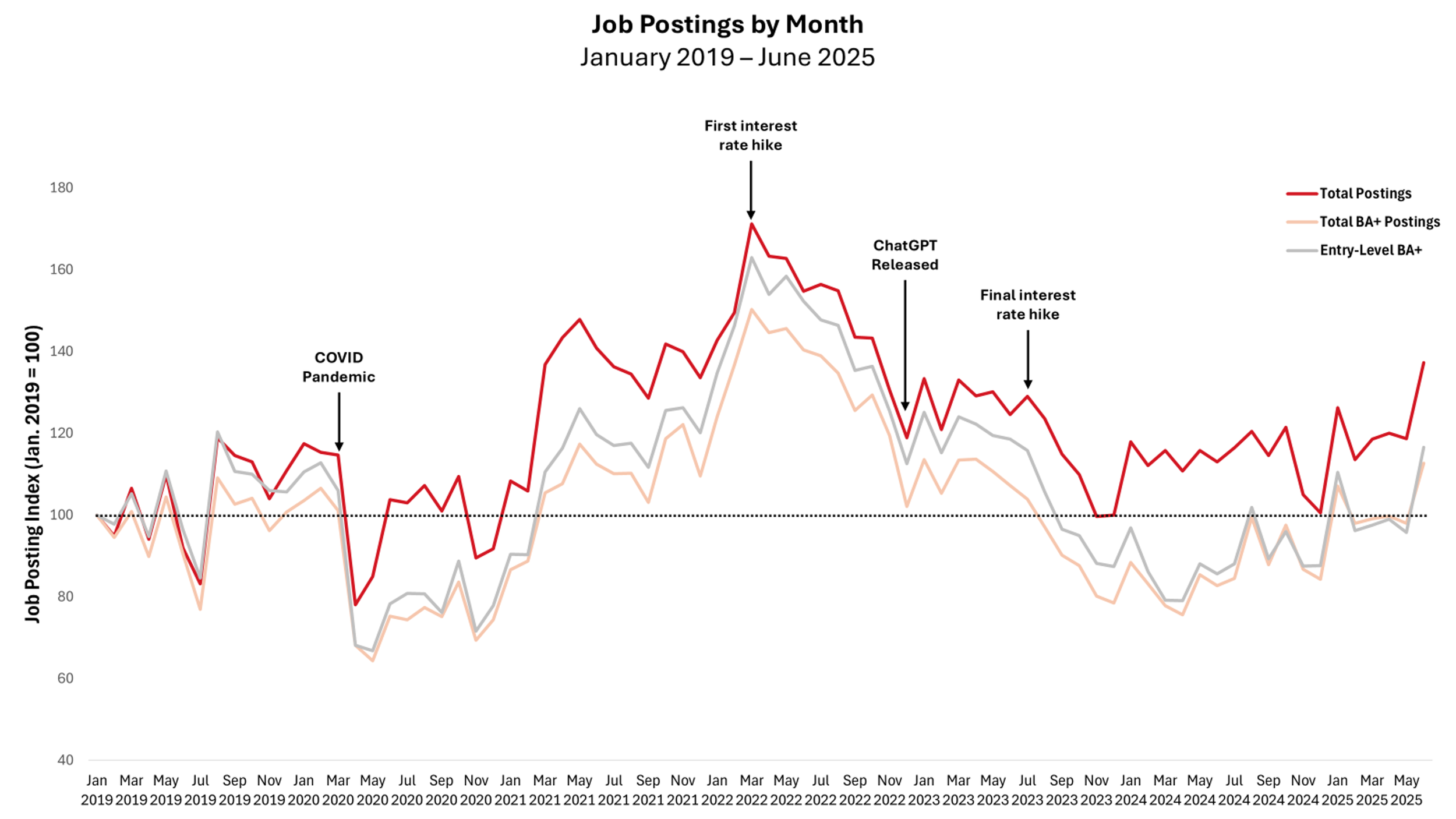Is AI Really Killing Jobs? The Data Says Not Yet
Is AI killing jobs, or do the data tell a different story?
Is artificial intelligence already replacing workers, or are we jumping at shadows?
If you take the word of many corporate leaders, the labor market is in for a rough patch at the hands of AI. From Amazon’s Andy Jassy to Ford’s Jim Farley, CEOs across industries are quick to warn of an impending AI jobs apocalypse. They point to the dizzying pace of adoption for new tools such as generative AI and AI agents, which are capable of augmenting or automating workflows traditionally reserved for humans. In some extreme cases – such as Shopify’s CEO Tobi Lütke – leaders are even instructing their organizations to freeze hiring unless managers can prove that AI is incapable of doing the job.
Unsurprisingly, this is fueling anxiety among many job seekers. In particular, it is eliciting considerable unease among white-collar workers who, historically, were considered the most insulated from automation. But amidst the constant drumbeat of AI doomsaying, the question remains: is the AI handwringing justified?
To investigate this question, we need to evaluate it using concrete data, not just qualitative anecdotes. As a starting point, we also need to confirm whether workforce demand is, in fact, even declining in the first place. To do this, we can turn to data from the Bureau of Labor Statistics, as well as our partners at Lightcast, to assess the impact of AI on the workforce.
So, what do we find?
Employment is Rising, Even in AI-Exposed Jobs
At first glance, we don’t see much evidence that jobs are going anywhere at the hands of AI, or anything else for that matter. Since 2022, the year generative AI burst on the scene with the release of ChatGPT, most job families have seen at least modest job growth, not declines. This is even true for many white-collar fields with the most exposure to generative AI, such as business and finance, computer and math, and legal.
Source: FourOne Insights Analysis of data from the Bureau of Labor Statistics.
One exception to this trend is in office and administrative occupations, which have shed over 630,000 jobs since 2022 – a decline of 3%. Much of this decline is concentrated in roles that are exposed to emerging AI tools, such as customer service reps, bookkeeping clerks, and administrative assistants. However, some of the roles that saw the biggest declines were already waning before generative AI became commonplace, making it difficult to attribute their declines to AI alone.
Job Postings are Down, But Don’t Blame AI (Yet)
If employment doesn’t give a clear indication of job declines linked to AI, it is possible that employment data may simply lag too far behind fast-moving fields like AI to reveal their full impact. Government data are rarely accused of being too recent, after all. This raises the question: what happens when we look at leading indicators for employer demand?
Leveraging data from Lightcast, we can track online job postings over time – a data point that serves as a bellwether for future employment trends. This does show that job postings for many roles have dipped in recent years, especially for jobs requiring a bachelor’s degree or above, which are the roles most exposed to generative AI. However, the most precipitous declines occurred starting in early-2022 – well before generative AI became more prominent with ChatGPT’s release in late 2022. As the following chart shows, this decline corresponds most closely to rising interest rates – not AI.
Source: FourOne Insights analysis of data from Lightcast.
When we factor in additional economic uncertainty from a spate of other economic destabilizers we’ve confronted the past few years – such as inflation, tariffs, and rising armed conflicts across the globe – it is difficult to see how AI can be considered a significant contributor to job posting decline, let alone the main one. Furthermore, as interest rates have begun to rise again over the past year, we are seeing demand begin to tick back up – even for entry-level jobs requiring a college degree, which are commonly cited as being first on the corporate chopping block due to AI.
Firms Investing in AI Aren’t Pulling Back on Non-AI Hiring
Lastly, we can look at companies themselves to see whether firms who invest more heavily in AI are seeing commensurate declines in their hiring activity. Could it be that large firms who publicly state that AI is impacting their workforce are the canary in the coal mine for widespread job displacement?
If this is the case, we would expect to see firms reduce hiring for non-AI jobs as they increase demand for AI-skilled jobs. However, when we look at Fortune 100 firms – who should be the most likely to begin investing in automation technologies given their scale and financial resources – we see no clear link between increased demand for AI-skilled workers in job postings and reduced demand for non-AI workers.
In fact, we actually see a slight increase in non-AI worker demand, on average, for Fortune 100 firms who saw the largest jump in their demand for AI skills. This means that when firms hire more AI workers, they are usually hiring more workers across the board. As such, increased AI hiring is more likely a proxy for overall firm innovation and expansion, rather than a direct substitute for human workers.
Source: FourOne Insights analysis of data from Lightcast.
Don’t Believe the Hype, but Don’t Become Complacent
Taken together, the data suggests it is quite a stretch to state that AI is already leading to widespread job displacement. However, this doesn’t mean we can become complacent or assume AI won’t have a significant impact on the workforce.
AI is arguably the most important new technology of our generation. It is changing how we consume and generate content, and is rewriting the skills needed in a broad swath of jobs. AI is also evolving rapidly, and important new developments in the field could be just around the bend.
This means that with AI we are still in the first inning of a long and unpredictable game, so it is too early to make bold statements about AI’s impact on the workforce. While we don’t see widespread evidence to back up the most outlandish claims of AI-fueled job displacement, no one can clearly predict its future. We also haven’t addressed how AI may be reshaping skills and tasks within jobs, which is where most job disruption tends to occur. The key, then, is to monitor the signals without panicking – and to invest in training and policy responses that hedge against uncertainty.
What we can say is that fears of imminent job displacement from AI appear overblown. That means we should have a hearty dose of skepticism whenever we hear CEOs, pundits, or anyone else tell us that AI is about to replace a considerable portion of the workforce anytime soon. Hopefully, that’s at least enough for a few of us to reduce our AI-induced heartburn.




